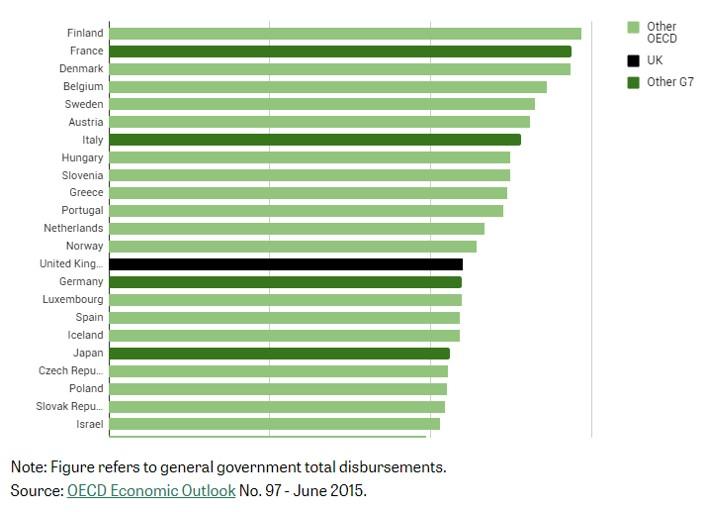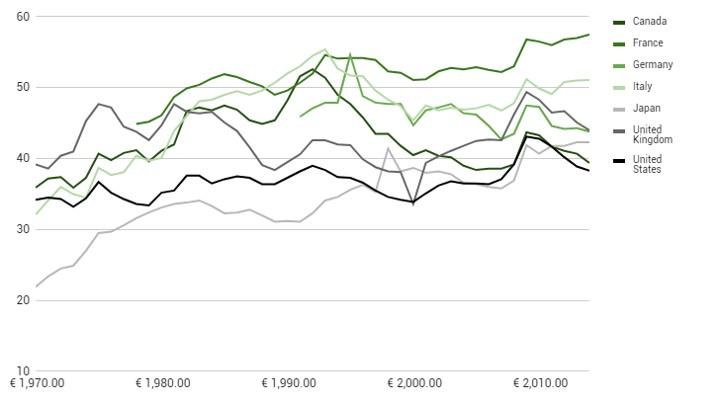Last updated: 28 September 2015
Each year, the government publishes Public Expenditure Statistical Analyses, which describes the composition of public spending up to the latest out-turn year available. The composition of spending in 2014–15 is shown in Figure 1. The largest single areas of government spending are social security, health and education, which together account for around three-fifths of all public spending.
For data on the composition of spending in 2014–15 as a percentage of GDP, or in £ per family, click here.
Figure 1. Total public spending in OECD countries, 2014

Note: Figure refers to general government total disbursements.
Source: OECD Economic Outlook No. 97 - June 2015.
Figure 1 masks the different path of government spending in the UK relative to other developed countries. If the snapshot shown in Figure 1 had been taken 10 years earlier, the UK would have appeared to have relatively lower spending as a share of national income. Figure 2 therefore shows how the changes in government spending as a proportion of national income in the UK between 1970 and 2014 compared with the experience of a selection of other countries.
Figure 2. Total public spending as a share of national income in selected countries, 1970 to 2014 (%)

Note: Figure refers to general government total disbursements. UK spending in 2000–01 is not adjusted for the sale of the 3G spectrum, and spending in 2012–13 is adjusted neither for the transfer of assets from the Royal Mail pension plan to the public sector nor for the sale of the 4G spectrum.
Source: OECD Economic Outlook No. 97 - June 2015.
All countries shown saw increases in government spending during the recession of the early 1990s, which were then reversed by the late 1990s. In 2000, the UK had lower government spending as a share of national income than France, Germany and Italy. The expansion of government spending over the early to mid 2000s brought the UK closer towards these three European countries, which typically either maintained or saw falls in their levels of public spending as a share of national income over this period. All countries saw their public spending rapidly increase as a share of national income between 2007 and 2009 as a result of the recession. The position of the UK shown in Figure 1 should be taken in the context of the increase in UK government spending of 6.8% of national income between 2007 and 2009 – this was the largest among the countries shown in Figure 2.